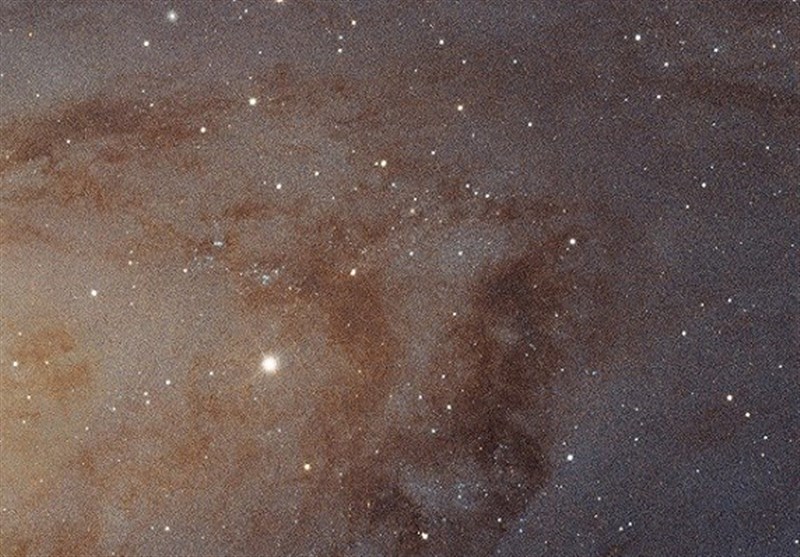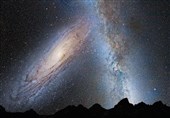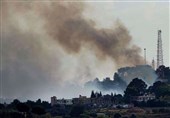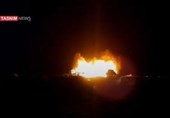Largest-Ever Image of Andromeda Galaxy ‘Extraordinarily Beautiful’
TEHRAN (Tasnim) – The "largest-ever" image assembled of the Andromeda galaxy by the Hubble Space Telescope was shared by NASA on Sunday. The picture was captured seven years ago and it is the sharpest large composite image ever taken of our galactic neighbor.
The National Aeronautics and Space Administration said that the image shows the 48,000-light-year-long stretch of the Andromeda galaxy with over 100 million stars in view. The panoramic image is divided into three parts in the Instagram post, with the last part showing a band of blue stars with countless stars scattered throughout the image.
"This image is split into three images. The first image shows a bright spot emanating from the lower left portion of the Andromeda galaxy with bands extending out in all directions. The light recedes in the top quarter of the image to primarily black and bits of blue space with countless stars. The second photo has light dissipating with bands of purple and blue giving way to the blackness of space," NASA wrote in the caption.
Since being shared, the image has left internet users mesmerized. It has accumulated more than one million likes. One user wrote, "It is extraordinarily beautiful." Another said, "It is phenomenal." "Absolutely incredible," commented third.
The space agency explained that because the Andromeda galaxy lies 2.5 million light-years away, one can identify thousands of star clusters. NASA said that our Milky Way galaxy and the Andromeda are similar in size and shape.
Notably, the image was first released in 2015 and reshared yesterday. It shows a 48,000-light-year-long stretch of the galaxy in its "natural visible-light color", the agency had stated. "Because the galaxy is only 2.5 million light-years from Earth, it is a much bigger target in the sky than the myriad galaxies Hubble routinely photographs that are billions of light-years away," NASA explained.






